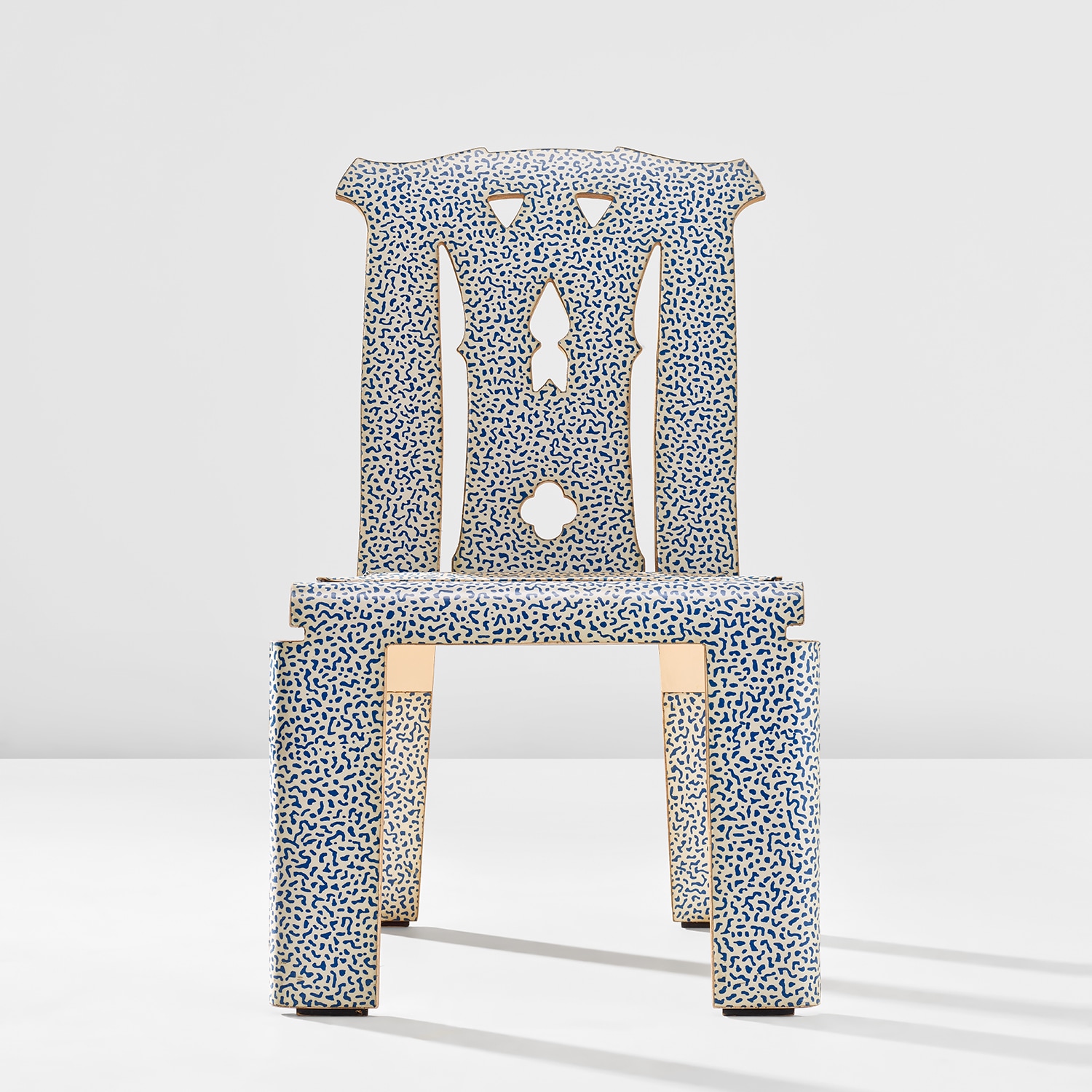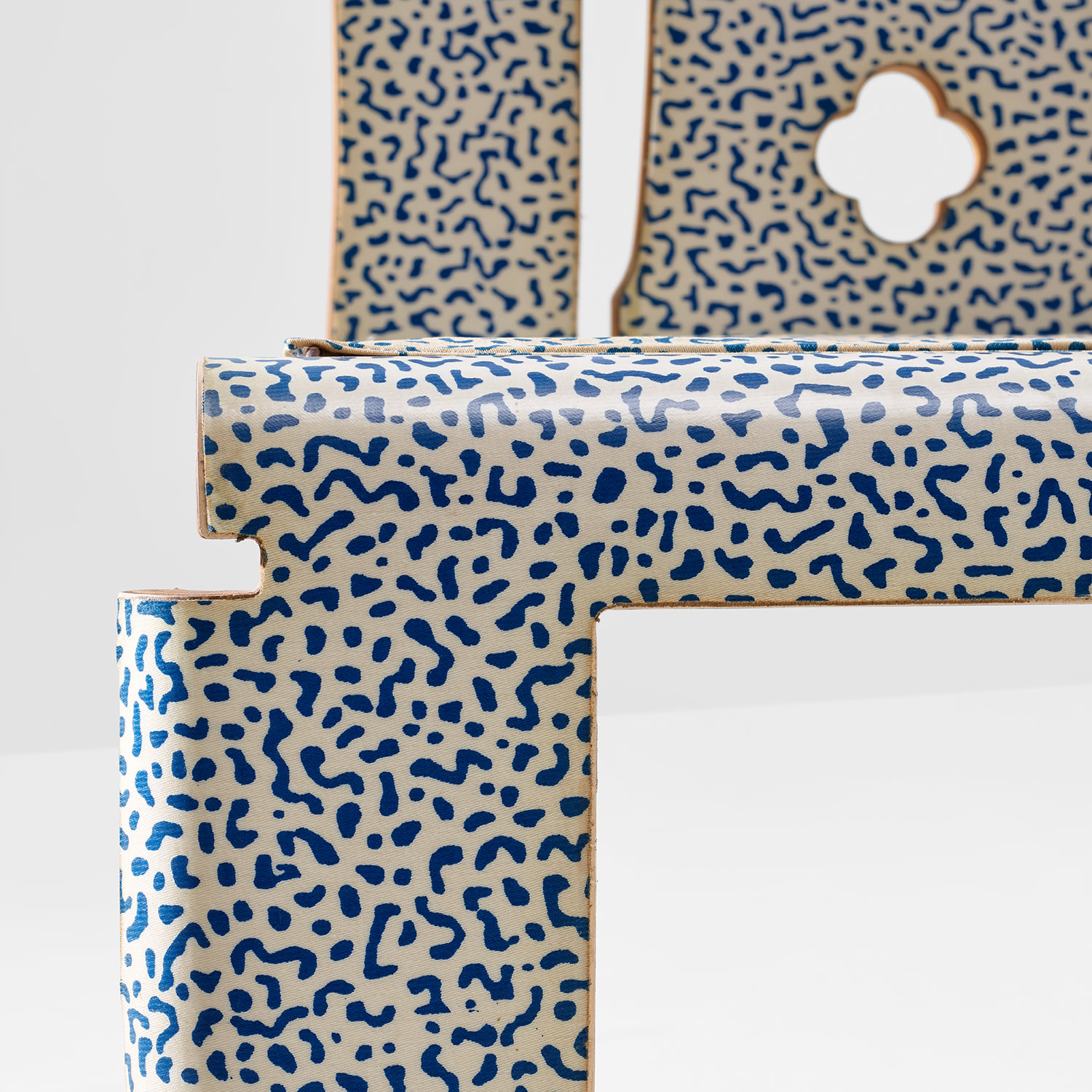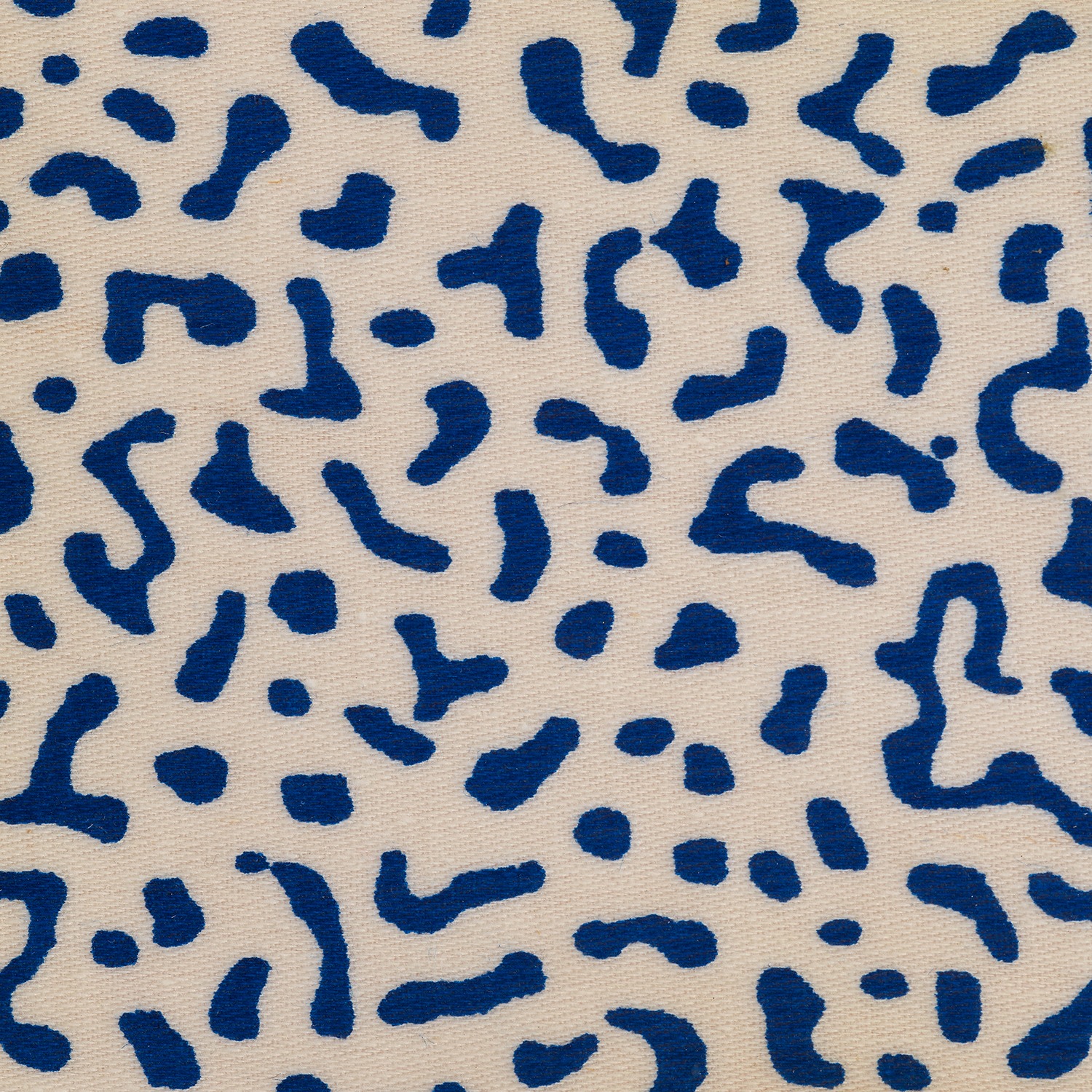







60
Robert Venturi and Denise Scott Brown
Prototype 'Chippendale' chair
circa 1983
Plastic laminate-covered plywood, fabric.
94.6 x 58.8 x 58.9 cm (37 1/4 x 23 1/8 x 23 1/4 in.)
Manufactured by Knoll International, Inc., New York. 'Bacterio' pattern designed by Ettore Sottsass, Jr. for Abet Laminati, Bra, Italy.